This Saturday, the Premier League will see third place holders Chelsea visit the champions, who are currently in fourth place, Manchester City.
Although it is still early in the season, no one expected that Manchester City would be down in fourth place. Some key injuries, as well as some tactical ignorance from Pep Guardiola, has seen the club lose three matches, and draw one already. The club has set expectations so high the past couple seasons, accumulating 198 points in two seasons, that it is shocking to see them drop points to teams like Norwich City, and Wolves. It begs the questions as to whether Guardiola has one eye on the Champions League and has put the league on the back burner, while his key players regain fitness. That being said, Manchester City have still had incredible matches this season, and to overlook them for this match, and the title, in general, would be naive.
On the other hand, not many expected Chelsea to start as well as they have. After a horrendous showing against Manchester United in the first game of the season, they managed to pick up their form, suffering only one other loss, and two draws in 11 matches. Frank Lampard has done an admirable job with Chelsea’s youth players, with youngsters like Tammy Abraham, Mason Mount, and Fikayo Tomori all shining for club level. A win against Manchester City would be huge for the club for two reasons. The first being the fact that it would be Chelsea’s first win against a top-six side this season, and what a statement it would be if it was against the reigning Champions away from home. The second would be the slim chance of a title challenge. It is yet to be seen whether Chelsea will be able to maintain their form, especially with a busy Christmas period, but a win against Manchester City could catapult their potential title challenge.
This tactical analysis will be a preview that will use analysis to look at the tactics that both teams are likely to employ, and how both teams can get the better of each other.
Manchester City’s likely set-up
Manchester City usually set up in a 4-3-3, that looks like a 2-3-5 when they are on the attack and have possession (which is often, they have averaged 65% possession in the league this season).
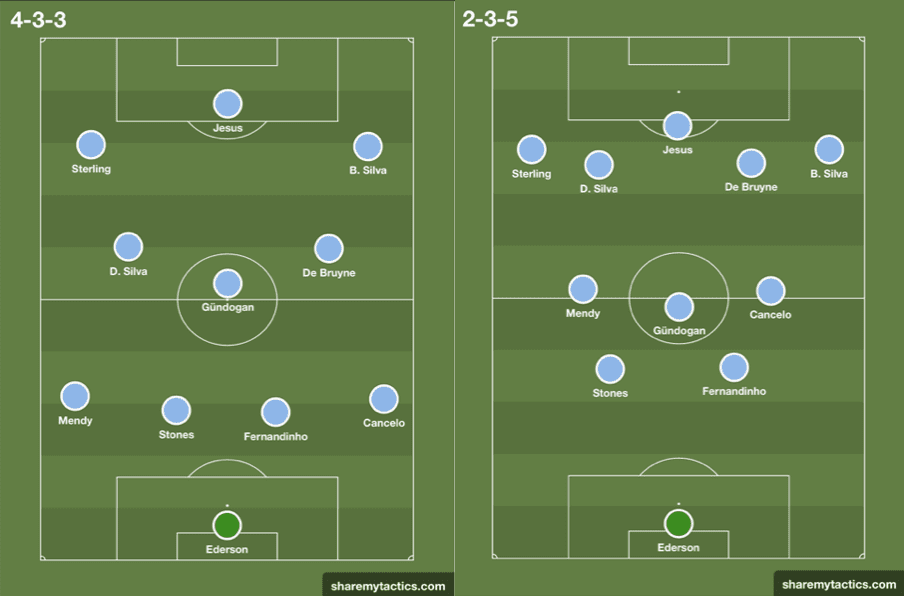
The 2-3-5 sees the two wide most forward midfielders join the two wide wingers and the striker to form a front five. The defensive midfielder will remain in his position, but alongside him will be the two fullbacks, who have become inverted, tucking inside. The back two consists of the two centre-backs.
While Guardiola usually uses the 4-3-3, utilizing it 43% of the time in Premier League matches, he has experimented with other formations that have had mixed results. The 4-2-3-1 has come up against mostly lower-tiered opposition, but with little success. Manchester City dropped points in three out of the five matches the 4-2-3-1 was used in the Premier League. They were their familiar free-flowing selves in attack, even more so than usual sometimes, but lacked defensive stability, which cost them.
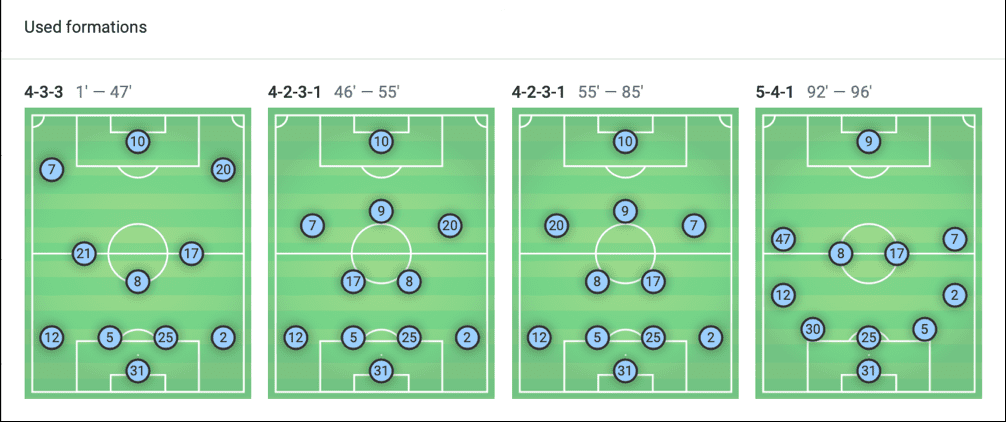
Another formation that Guardiola has used this season to some success is the 4-4-1-1. The two banks of four gave a team with defensive injuries some support, while Kevin De Bruyne as the most advanced midfielder in the #10 role is free of defensive duties (versus his role as a #8 in the 4-3-3 forces him to be both offensively and defensively aware). De Bruyne is then free to use his skill set to create chances for the striker, and the wide players that go forward in possession. The 4-4-1-1 was successful for Manchester City against Everton, beating them 1-3 at Goodison Park. However, Guardiola decided to use the formation against Liverpool at Anfield, and they left with a 3-1 loss.
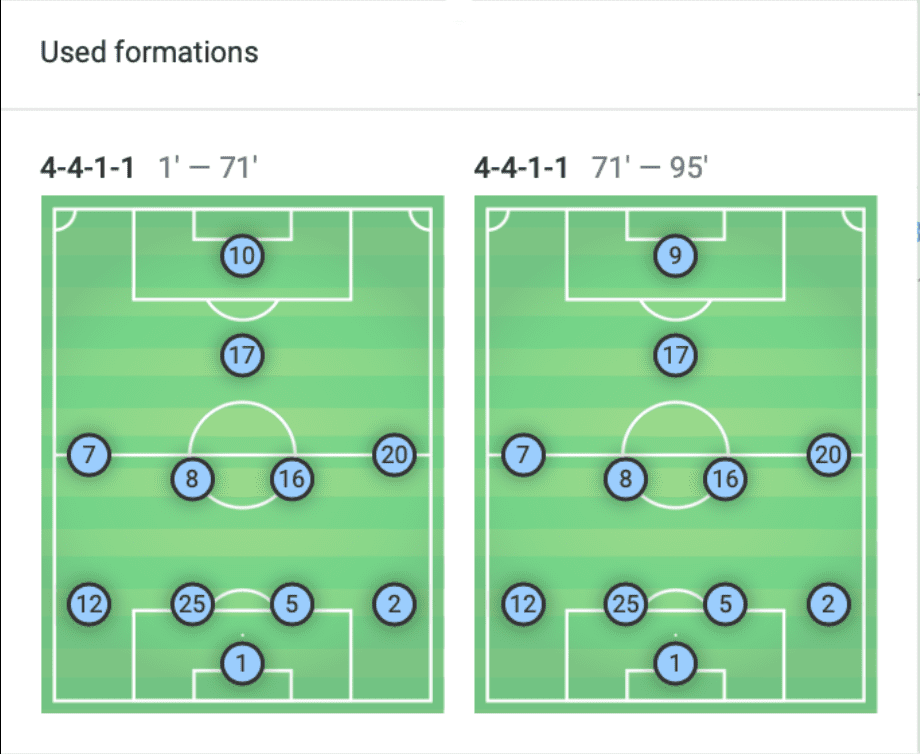
It is hard to say predict how Guardiola will set up his team. Especially, with Bernardo Silva being added to the injury list, Guardiola has limited options. However, with the loss against Liverpool using the 4-4-1-1, it’s likely he’ll go to his tried and trusted 4-3-3, at least for the beginning of the match.
Chelsea’s likely set-up
Lampard has used a 4-3-3 formation and a 4-2-3-1 formation quite interchangeably this season at Chelsea, with the former being used 25% and the latter being used 39% of the time.
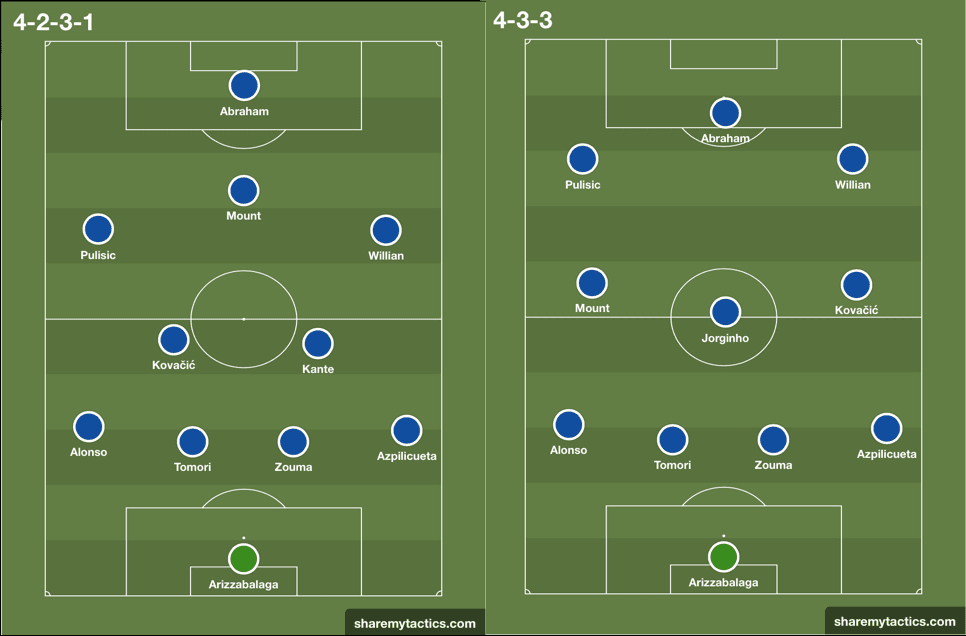
Lampard’s key strength tactically in his short time at Chelsea has been his in-game management. He showcased this against both matches in the Champions League against Ajax, as well as against Norwich City.
He has completely changed Sarri’s possession-based philosophy and instead, has imployed a high pressing system in defence, and the use of crosses from the flanks to a target man, centrally, something that Sarri did not hide his disdain for.
A 4-3-3 will likely be a better option against Manchester City. Of course, Lampard and his side want to go home with the three points, and it may be tempting to use the 4-2-3-1 to try and score as much as possible. However, the 4-2-3-1 may be too risky, especially in defence.
Using a 4-3-3 will allow Chelsea to convert to a back five if need be, specifically targetting Manchester City’s runners in midfield.
The bank of five up top in Manchester City’s 2-3-5 sees the two #8’s surge forward. The wingers stay wide, attempting to lure fullbacks away, which leaves a gap wide open for the #8’s to receive the ball in a dangerous position, where they can choose to shoot or pass.
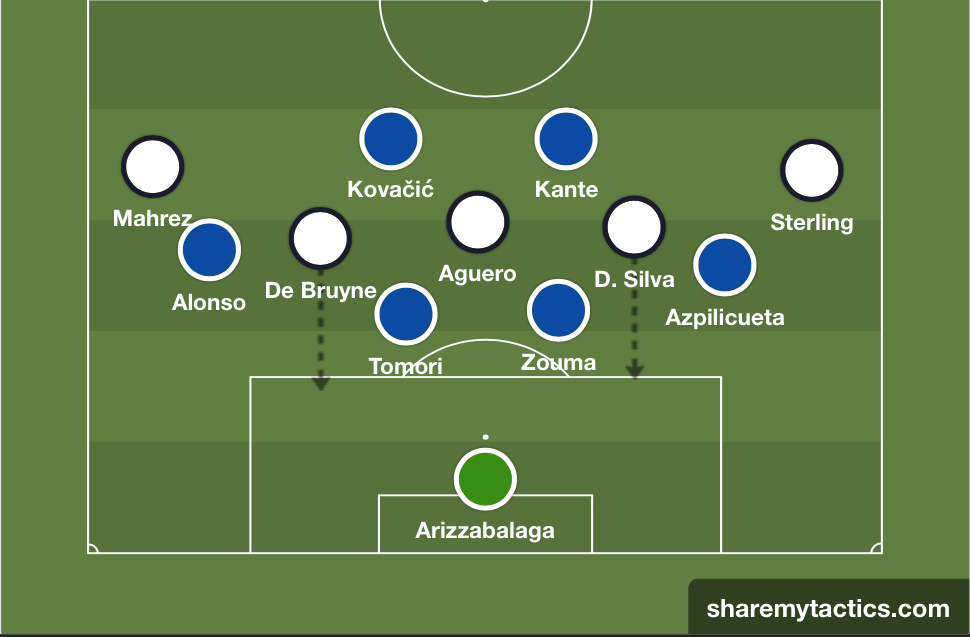
A 4-3-3 will allow that extra support, and a Chelsea midfielder will be able to cover the Manchester City runners, making it more difficult to break Chelsea down.
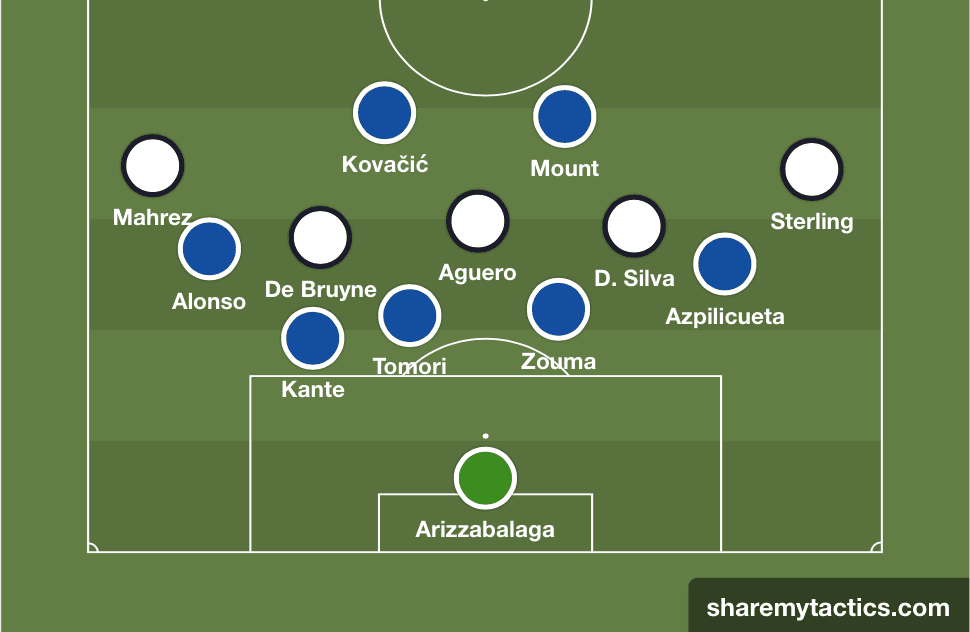
Manchester City as favourites?
Even though Chelsea are above Manchester City in the table, the latter should be seen as favourites, because of the home advantage, their consistency over the last few years, and their experience.
Guardiola has yet to play Lampard in his managerial career, so their head-to-head cannot be considered. However, without a win against a top-six side, Lampard is going into this as the underdog.
That being said, Chelsea will hold their own. Having scored the most away goals in the Premier League this season, so far, their young and dynamic strike force is to not be estimated.
How Chelsea can hurt Manchester City
As mentioned above, Manchester City do have some injury troubles currently. It is clear that they have missed Aymeric Laporte. Manchester City’s other senior centre-backs, John Stones and Nicolás Otamendi, have been unimpressive when paired together. This has forced Guardiola to play Fernandinho, his best defensive midfielder at centre-back. It is clear that Rodri is still adapting to the league, and Guardiola’s system; he has been good, but not at the heights we saw him at Atletico Madrid.
This has led to new players in positions that are not their first choice for a few game weeks in the Premier League. These players may not know the system as well, and more importantly, their role, especially defensively.
In Manchester City’s 2-3-5, there is a vulnerability to the system that Chelsea can use to their advantage.
Counter-attacks
With the 2-3-5, the inverted full-backs are there to support the lone defensive midfielder and the attacking five players. The narrowness on the pitch in Manchester City’s half leaves a lot of space on the flanks.
For Manchester City to not get exploited on these flanks, they have to ensure they are quick, and efficient in their pressing, and that they get back into a defensive transition quickly. Two things that they have struggled with this season.
Manchester City has seen a decline in their pressing since as early as the beginging of the season, which can be measured by looking at their passes allowed per defensive action. This statistic is essentially the calculation of the number of passes made by the attacking team/number of defensive actions. The smaller the PPDA number is, the better the team is at with their levels of intensity without the ball, as the defending team has allowed a small number of passes to be made by the attacking team.
Last season, Manchester City avveraged a PPDA of 8.46 per game. This season, it has jumped up to 9.66. Not a huge difference, but the numbers of recent games are telling.
In Manchester City’s home win against Atalanta, their PPDA was at 9.48, consistent with their average this season. The match in Italy two weeks later saw their PPDA jump up to 13.05, the highest it has been since they played Liverpool in the Community Shield in the preseason.
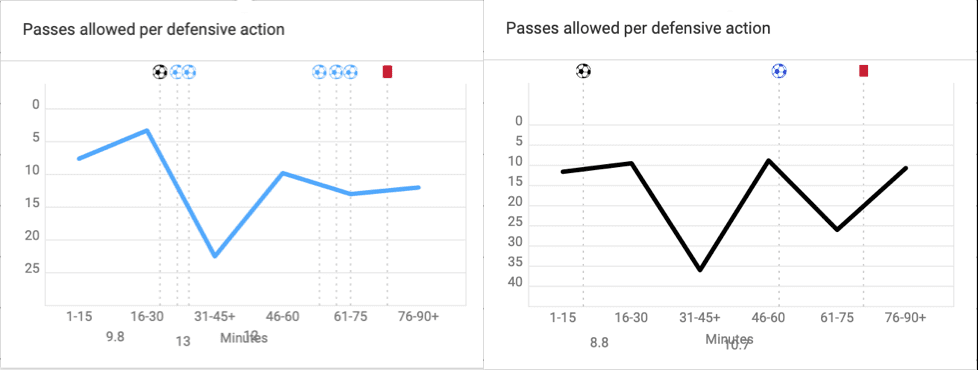
The record did not last long, as it jumped up to 13.87 against Liverpool in the league.
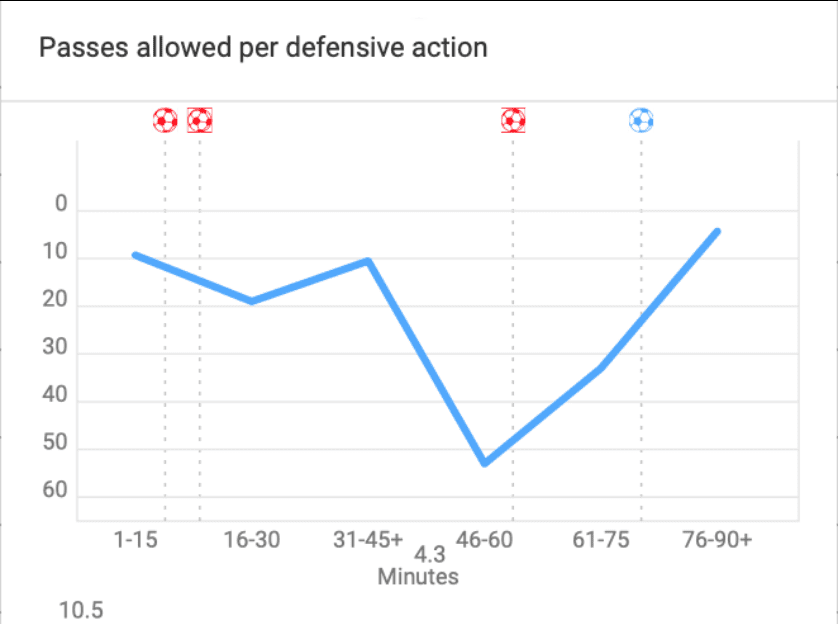
These numbers tell us that the players are starting to wear out because the squad depth is dwindling, they are not as energetic without the ball.
Chelsea can exploit this on the counter. If Manchester City become lethargic quickly into the game, Chelsea can exploit those areas on the flanks by winning the second balls that Manchester City fail to.
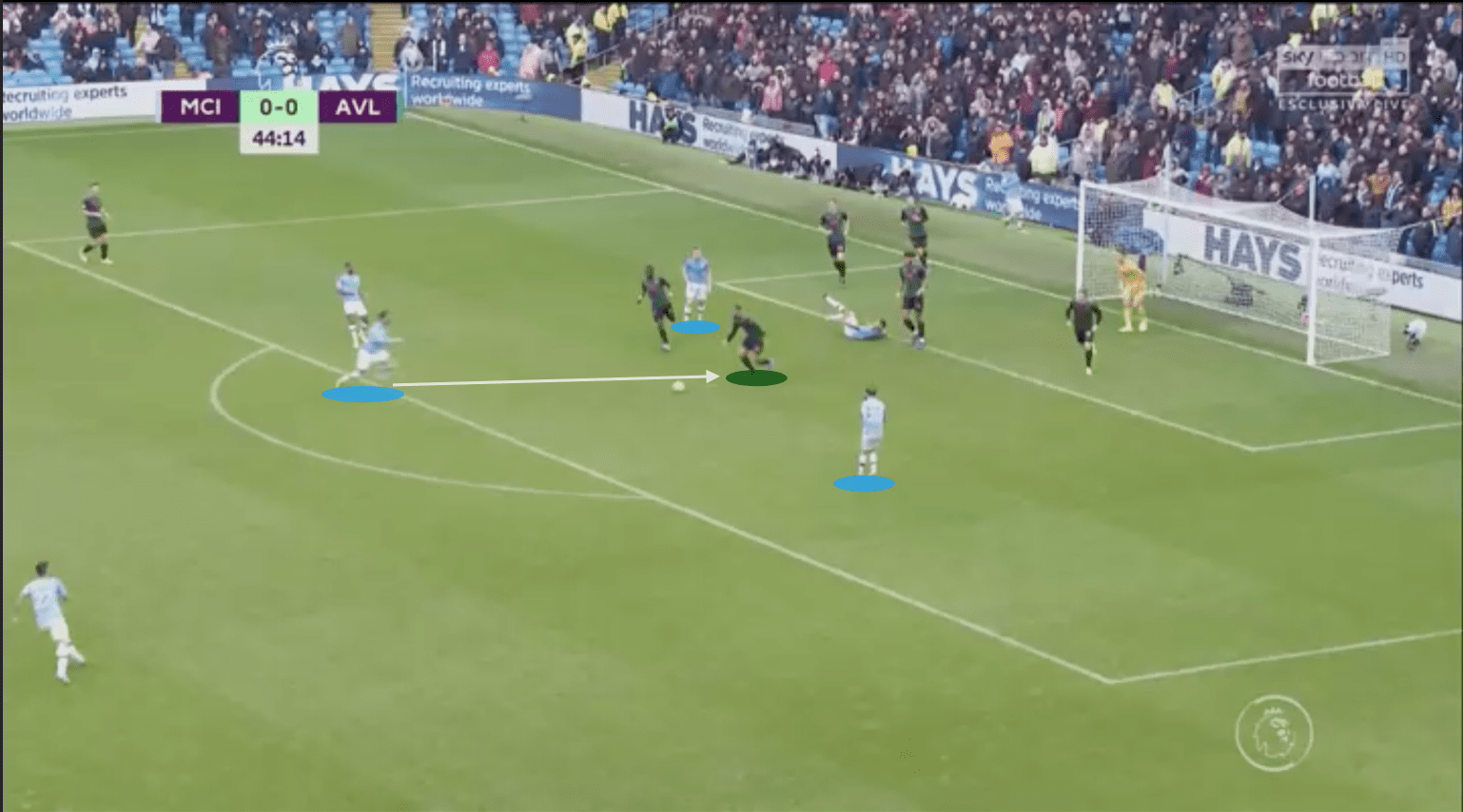
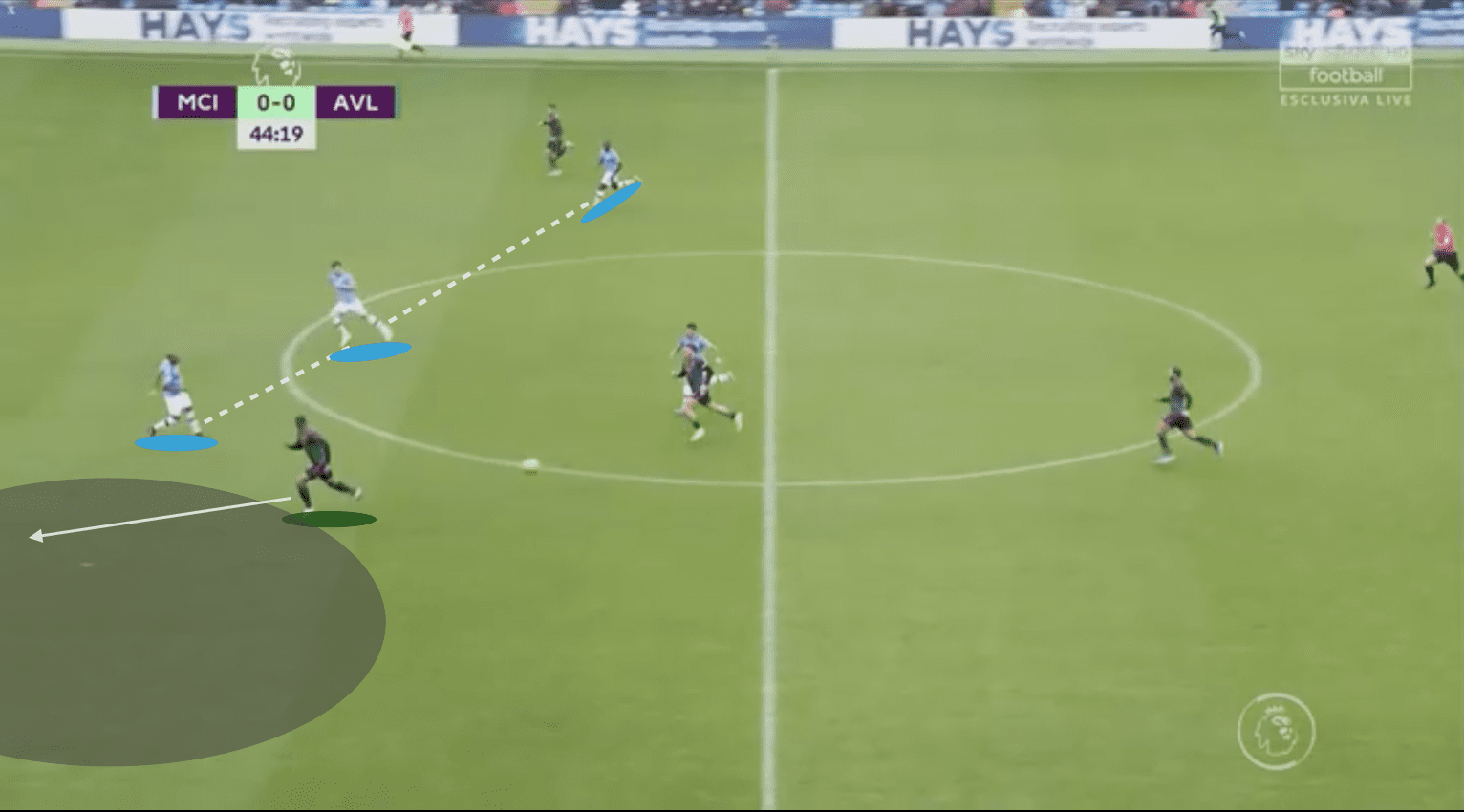
Conclusion
A fascinating tactical battle awaits Premier League fans as we see a very young, and still very inexperienced manager travel to the Etihad and face one of the world’s best. The David versus Goliath narrative should not be to played out though. Recent weeks has seen Manchester City struggle, and Chelsea thrive. Anything can happen in the Premier League, and with Manchester City’s injury issues, Chelsea have the chance to go to the Etihad and further the gap between themselves and fourth place.

If you love tactical analysis, then you’ll love the digital magazines from totalfootballanalysis.com – a guaranteed 100+ pages of pure tactical analysis covering topics from the Premier League, Serie A, La Liga, Bundesliga and many, many more. Buy your copy of the November issue for just ₤4.99 here





Comments